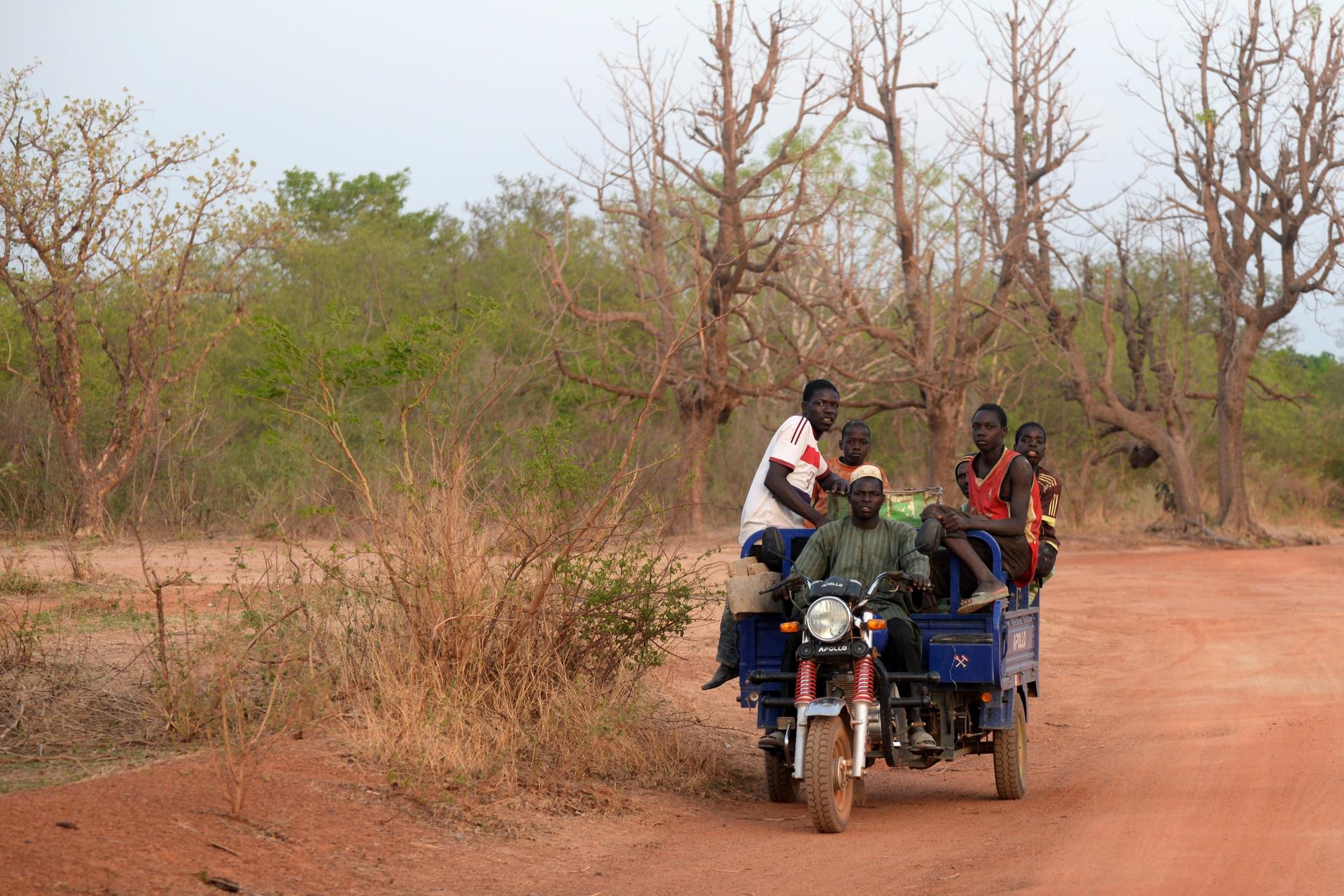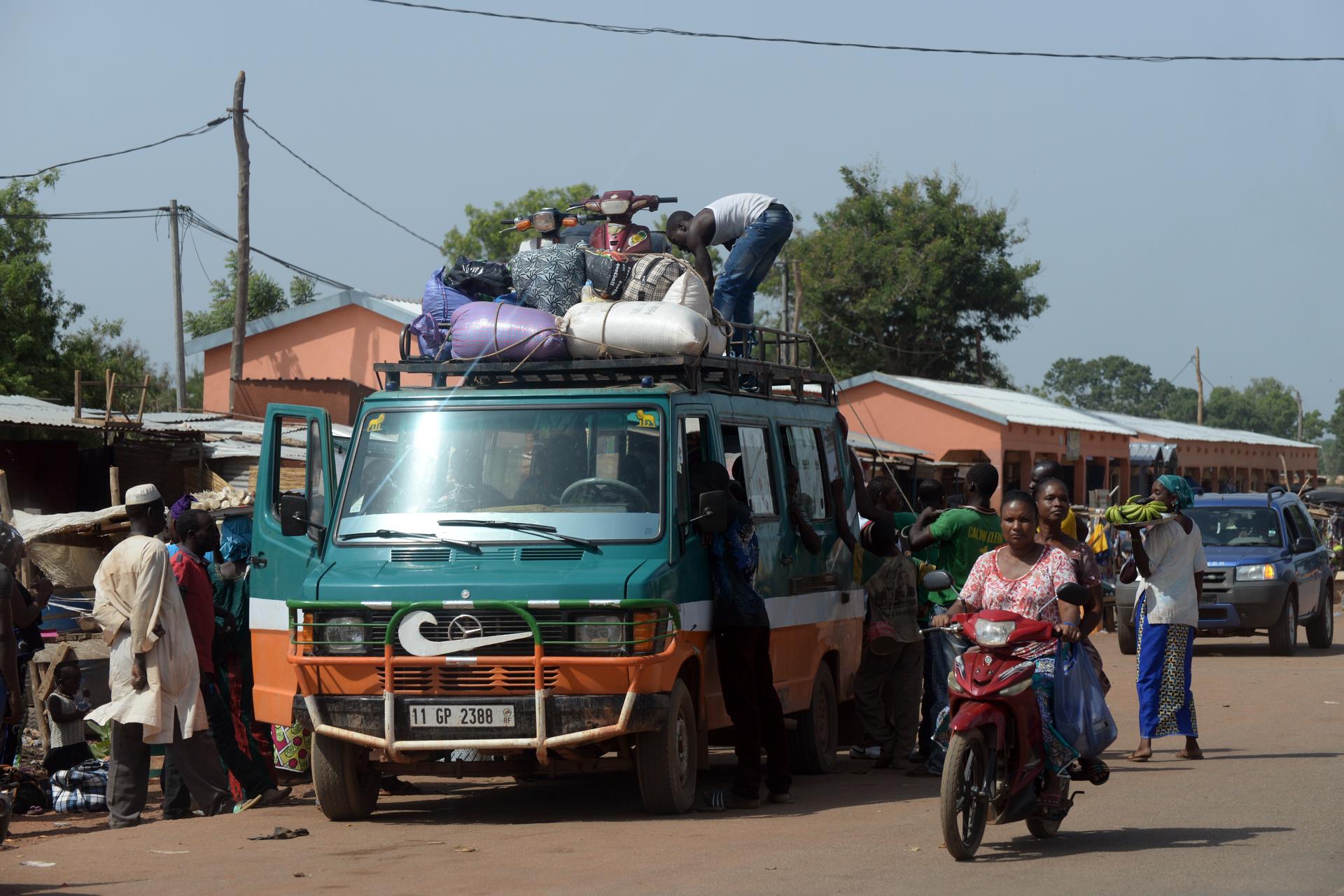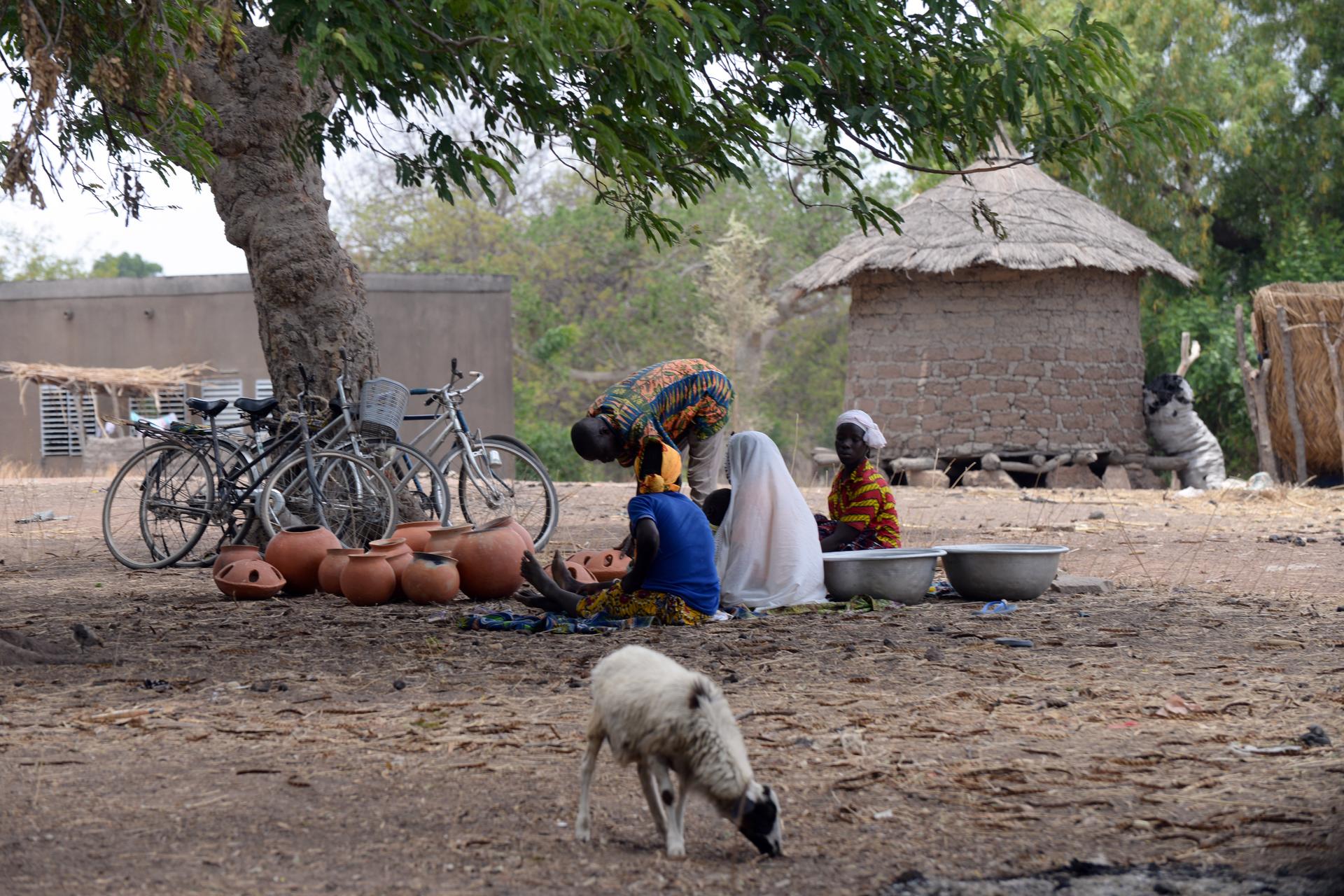Blog Tracking the relationship between gender, migration, and family farming

A study in Burkina Faso explores how male outmigration impacts rural households and livelihoods.
Worldwide, it has become increasingly difficult to maintain family farms. Climate change, land degradation, low returns on agricultural work, and shifting aspirations of younger household members, among other factors, are encouraging rural dwellers to diversify their livelihood activities. In many contexts, this includes the migration of one or more household members to secure additional income or follow other pursuits.
Migration trends are highly gendered. In many contexts, it is young men who leave their household, either temporarily for a few weeks or months at a time, or permanently. This can lead to important changes in how agricultural and other tasks are organized among household members who remain on the farm, and the relationship that migrant maintains with them.
Despite the increasing importance of rural outmigration around the world, little is known about these impacts, and about how migration affects smallholder production systems more generally.
This was the question we, researchers from the Alliance of Bioversity International and CIAT, in partnership with Association tiipaalga – a local NGO working on land restoration – sought to address in Burkina Faso’s Central Plateau. Our research, which was part of a comparative study that also encompassed work by World Agroforestry in Kenya (see article and brief), relied on a mix of qualitative and quantitative methods, such as interviews, focus group discussions, and surveys with different household members. We present comparative findings from this work in this newly released brief.
Rural Outmigration in Oubritenga Province, Burkina Faso
The province of Oubritenga, on the Central Plateau of Burkina Faso, is experiencing high rates of rural outmigration. Our study showed that various migration patterns exist, with different implications for local people and farming.
In this area of Burkina Faso, permanent migration used to be the most common, but temporary migration is increasing. Permanent migrants tend to migrate internationally, whereas temporary migrants are more likely to stay within the country, which makes it easier for them to come home periodically to visit their family and farms.

The province of Oubritenga is experiencing high rates of rural outmigration. Credit: B.Vinceti
Nearly all migrants in our study were men, but they were rarely the head of the household. Instead, they were generally the son or brother of the household head. Our study showed that many cultural norms restrict women’s ability to migrate. For example, there are social expectations that women will stay at home to care for children and the household, and it is considered inappropriate for women to migrate on their own. As a woman who participated in one of the study’s focus groups explained:
Women do not have the right [to migrate]. Men forbid them. They say it is tradition: a woman must always stay at home and take care of her children.
The study also showed that migrants are mainly from larger households, with larger landholdings. As another participant explained:
Not all households have the same ability to send or let members leave for migration. For example, if in a household there are only three people, like the head of the household, his wife and son, no one can migrate, or the family would starve.
Age or generation is very important in shaping decisions to migrate. For example, participants explained that young men are more likely to migrate as they are less interested in farming and more interested in purchasing goods (such as motorcycles or mobile phones) that they are expected to have before they can marry. Younger migrants are also motivated to pursue their own paths rather than feeling limited to their family farm.
Impacts of Outmigration on the Family Farm and Household
In the study, about 60% of migrants sent remittances home to their family over the past year, although amounts were often quite small. Buying food for the household, followed by health costs, tuition fees, and farming inputs, were the most common use of remittances. In this way, remittances helped with household subsistence, and with some investments in agricultural production.
Most migrants used to contribute labour to the family farm before migrating, and over half of temporary migrants continued to do so by coming back during peak agricultural periods. Nevertheless, their absence during certain months made it difficult to pursue labour-intensive activities, such as developing planting basins or stone bunds to restore lands. One way that households have coped with a drop in labour is by reducing the amount of land that they cultivate or cutting back on specific land preparation activities.

Outmigration causes changes in the division of labour among household members who remain on the farm. Credit: B.Vinceti
“Agriculture has no future”
Migration has both positive and less positive outcomes for families, but most of households involved in the study wanted their household member(s) to continue migrating and sending remittances home. They feared that agriculture does not hold promise for younger generations, and that climate change will pose huge challenges for the future of farming.
Yet many unknowns remain. A deeper understanding of the relationship between the drivers and impacts of rural outmigration in different contexts and for different types of households is important to support the livelihoods of farmers and their farming systems. This is more urgent than ever, amidst the rapid environmental, economic, and social transformations that threaten the desirability and viability of family farming.
This research was funded by the CGIAR Collaborative Platform for Gender Research through the CGIAR Research Program on Policies, Institutions, and Markets (led by IFPRI) and the CGIAR Trust Fund Donors. It was also supported by the CGIAR Research Program on Forests, Trees and Agroforestry, the CGIAR Research Program on Water, Land and Ecosystems, and the Austrian Development Agency-funded project: ‘Nutrition-sensitive Forest restoration to enhance the capacity of rural communities in Burkina Faso to adapt to change’.

